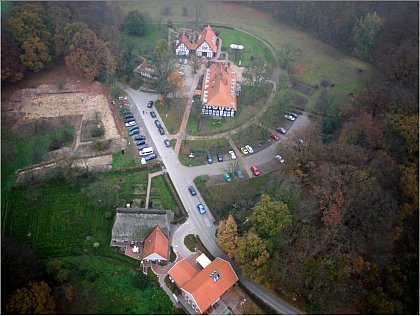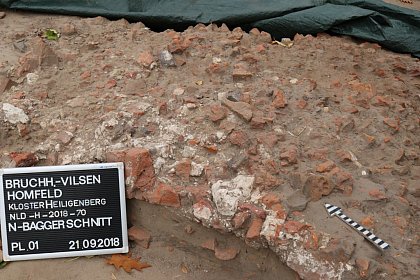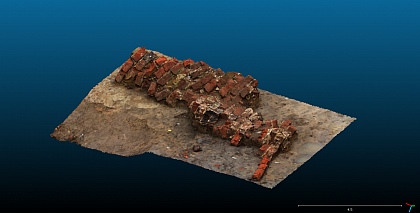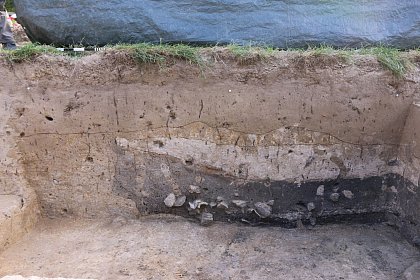Teaching excavation Heiligenberg

Aerial view of the Heiligenberg circular rampart complex with the tree-covered ramparts and the first excavation area (left) from 2011 (Source: NLD)
Since 2018, a teaching excavation has been carried out in cooperation between the Seminar for Oriental Archaeology and Art History at Martin Luther University Halle-Wittenberg (MLU) and the Niedersächsischen Landesamt für Denkmalpflege (NLD, Lower Saxony State Office for Cultural Heritage) under the direction of Simone Arnhold and Friedrich-Wilhelm Wulf (NLD). The work takes place in the Heiligenberg ring wall complex near Bruchhausen-Vilsen, Diepholz district, during the summer months. Students can gain a comprehensive insight into archaeological fieldwork, from simpel spat work to surveying and documentation.

Debris layer Heiligenberg (Photo: Timo Feike)

The first excavations in 2018 and 2019 in the west of the Heiligenberg mainly yielded settlement material from the monastic period and post pits of a building. The finding of a small-scale debris layer of brick and tile rubble mixed with pottery, glass, ash and charcoal suggests a large damaging fire in the course of or after the dissolution of the monastic complex. Building material that was still largely intact was collected from this rubble and used for a small building erected directly on the surface, as evidenced by a tilted corner.

Mortar pit (Photo: Wiebke Lüdtke)
Another excavation in the north-west of the Heiligenberg was able to follow up a building cut in the course of a construction project in 2011. Its post pits, up to 1.4 m in diameter, still reached up to 1.5 m deep into the ground. In addition, a mortar pit could be partially recorded over 3 m, under which there was a thick fire layer with numerous large-format ball pot sherds.
From 13th September until 1st November 2020, the results of the excavation as well as older investigations and the history of the Heiligenberg were presented at the Kreismuseum Syke.





